
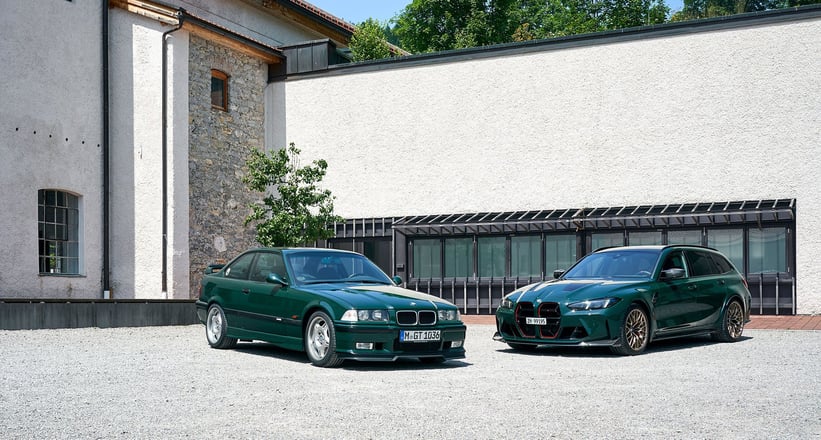

The BMW 3 Series has many faces: working-class hero, brand ambassador and perennial favorite, versatile wonder, entry-level model, family station wagon, sun cruiser, competitive athlete, art car, BMW M icon, DTM legend, integration supporter, tuning victim and drift car, automotive cliché and dream car all at once. It is the archetypal BMW, the counterpart to the Porsche 911 from Zuffenhausen – Bavarian and down-to-earth, yet highly desirable. The BMW 3 Series was launched in 1975 to replace the 02-Series. And the 3 Series sold brilliantly from the very beginning! The first million rolled off the production line as early as 1981.
Since then, more than 16 million units have been built and sold worldwide. In the triumvirate of the 3 Series, 5 Series, and 7 Series, the "little one" long stood for sportiness, design purism, and automotive class at a manageable price. The BMW 3 Series is now in its seventh generation. And even though the globalized automotive world has changed, and you can now pay as much for a BMW M3 CS as you would for a Ferrari, the 3 Series remains by far the most successful model from Munich — and the beating heart of the BMW brand.
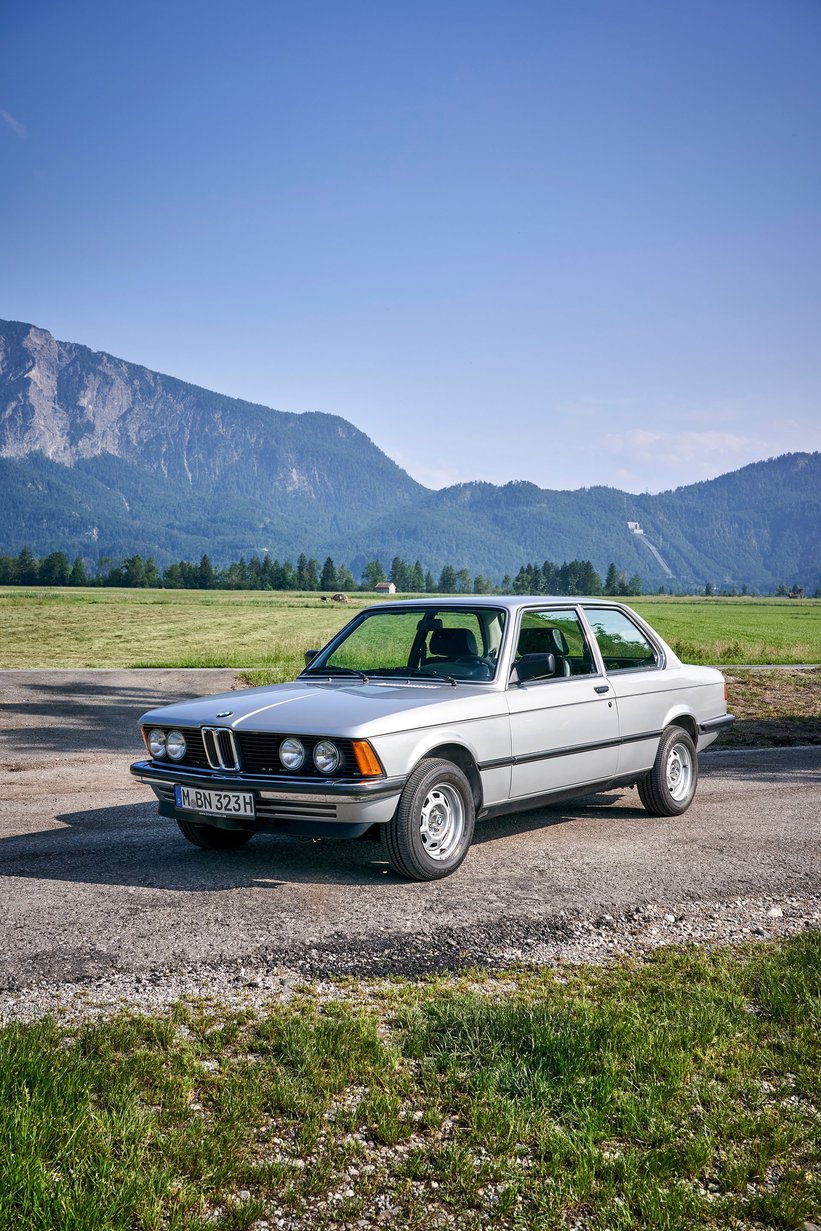
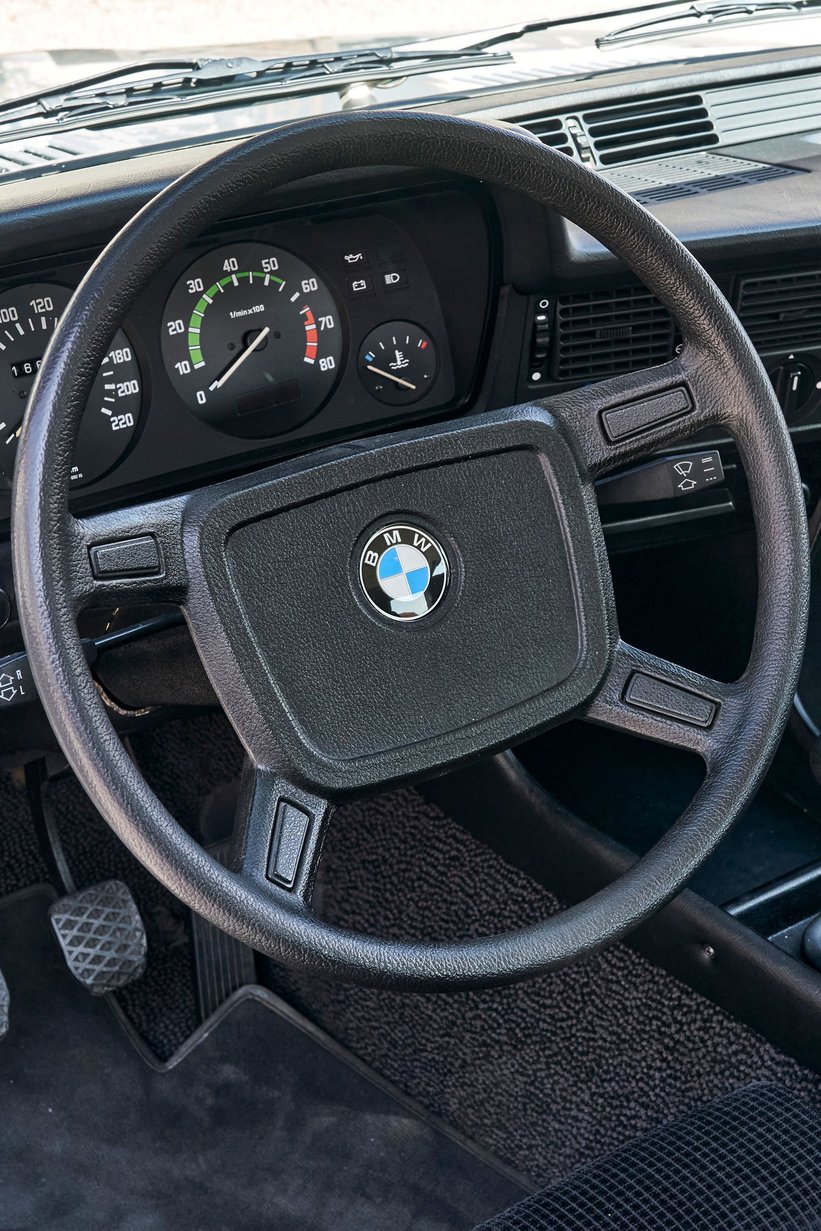
The blueprint
To mark the 50th anniversary of this modest icon, BMW Switzerland and BMW Classic invited me to Munich for a road trip to Tegernsee, taking me through the entire model's history. For us at Classic Driver, the first three generations are of particular interest. So, I started with the BMW 323i of the E21 generation – a modest car at first glance, one that can easily get lost in the brand's impressive history of the era between the CSL, the M1, and the first BMW Art Cars. Painted in a simple silver, the original 3 Series appears somewhat fragile next to its wide-body successors. But the shark-shaped grille, designed by the great Paul Bracq, the round dual headlights, and the narrow kidney grille have had a more lasting impact on the brand's design history than almost any other model. The Design Museum in London recently even celebrated the BMW E21 as one of the "50 cars that changed the world." Getting into the cockpit is the first surprise: The fabric-covered sports seats envelop you like a glove, and the entire cockpit tilts toward the driver – another groundbreaking innovation of the first BMW 3 Series.
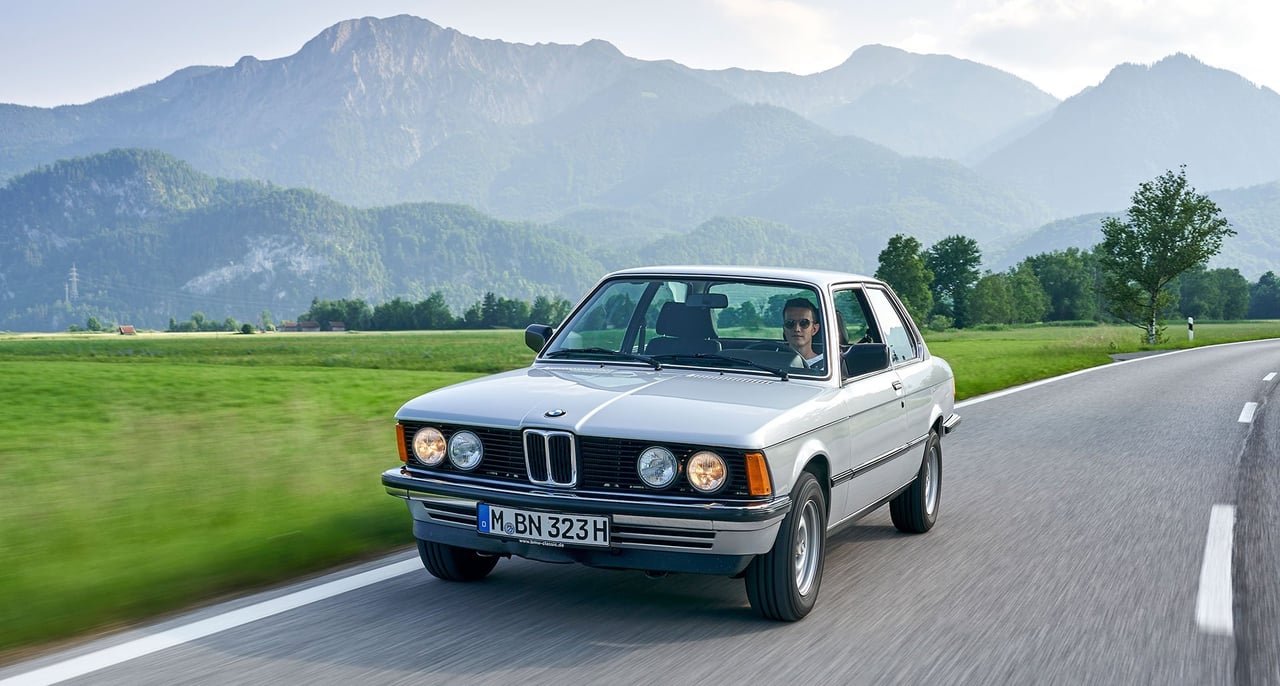
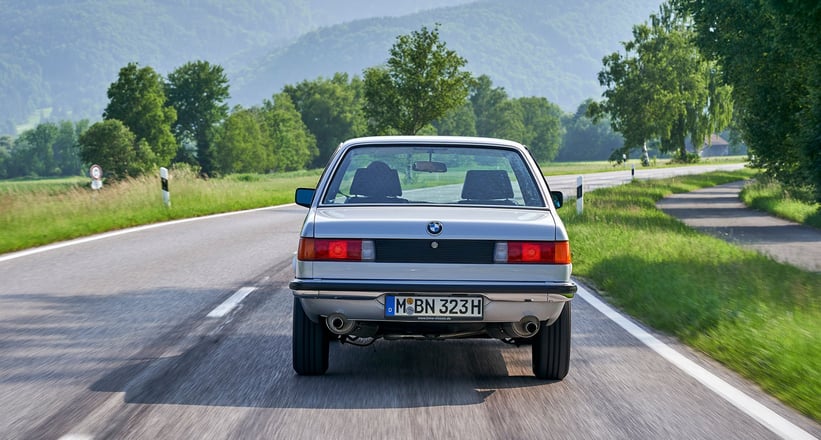

In August 1975, the BMW 3 Series was initially launched as a four-cylinder model. In 1977, however, BMW followed up with two crisp six-cylinder variations. Our car from the hallowed halls of BMW Classic is a 1979 BMW 323i, whose engine awakens with a promisingly sonorous roar. And indeed, the two-door sedan handles surprisingly smoothly and powerfully. Especially on the winding country roads between Tegernsee and Walchensee, it becomes clear how sporty 140 hp can feel when faced with a total weight of just 1100 kg. The chassis is also remarkably taut and agile. The famous BMW slogan "Freude am Fahren", loosely translated into "Sheer Driving Pleasure", may have been introduced back in 1965 , but the refinement of the six-cylinder 3 Series turned the promise into reality.
Another factor that adds to the E21's coolness is that its racetrack incarnation in the form of the BMW 320 Group 5 – preferably as a pop art car by Roy Lichtenstein or in the orange livery of Jägermeister Racing – is one of the most fascinating racing cars of the 1970s. And regardless of whether this BMW 323i actually performed so fantastically in its day, or whether the friendly mechanics at BMW Classic gave it a little help , we still feel a little of that primal racing spirit when pushing down the accelerator pedal.
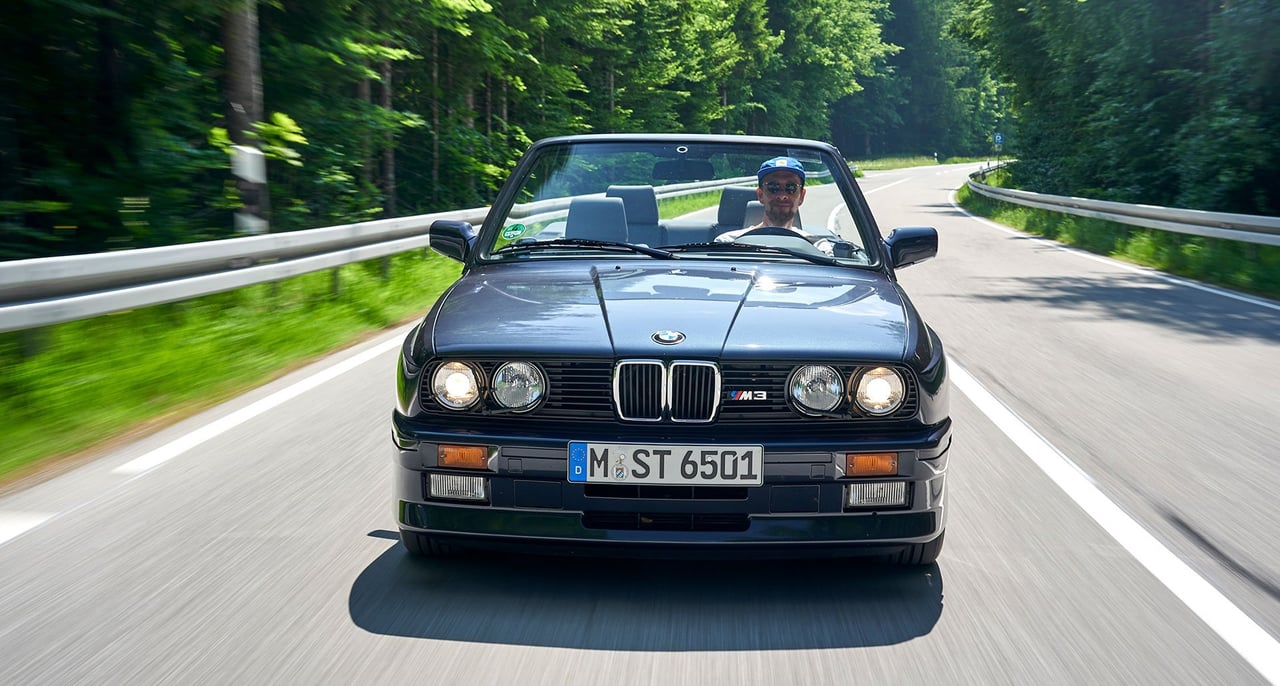
Icon by detour
Switching to the E30-generation BMW M3, the golden calf of the 3 Series cult, doesn't feel — surprise! — like an upgrade at first. Instead of wood and corduroy, I'm surrounded by grained hard plastic. And the approximately 200 hp mobilized by the 1.3-ton convertible initially sounds and feels less lively than the engine and chassis of its predecessor. Like many poster cars of the 1980s, such as the Ferrari Testarossa, the open-top BMW M3 also needs to get its weight up to speed before it becomes truly fun to drive. Of course, the pop-cultural experience is almost more enjoyable than the driving itself, which takes a bit of getting used to due to the dog-leg transmission: After all, the BMW E30 is the picture-perfect 3 Series, the great design icon, the quick-change artist. More than 2.3 million units were built between 1982 and 1994 – including modest two-doors like the 316i, the muscular and fast M3 Sport Evolution, as well as the first Touring variant and the first all-wheel drive model, eagerly desired by Swiss customers. The E30-generation BMW 3 Series was just as popular with young drivers and family men as it was with DTM racers and gangster rappers. And therein lay its secret.
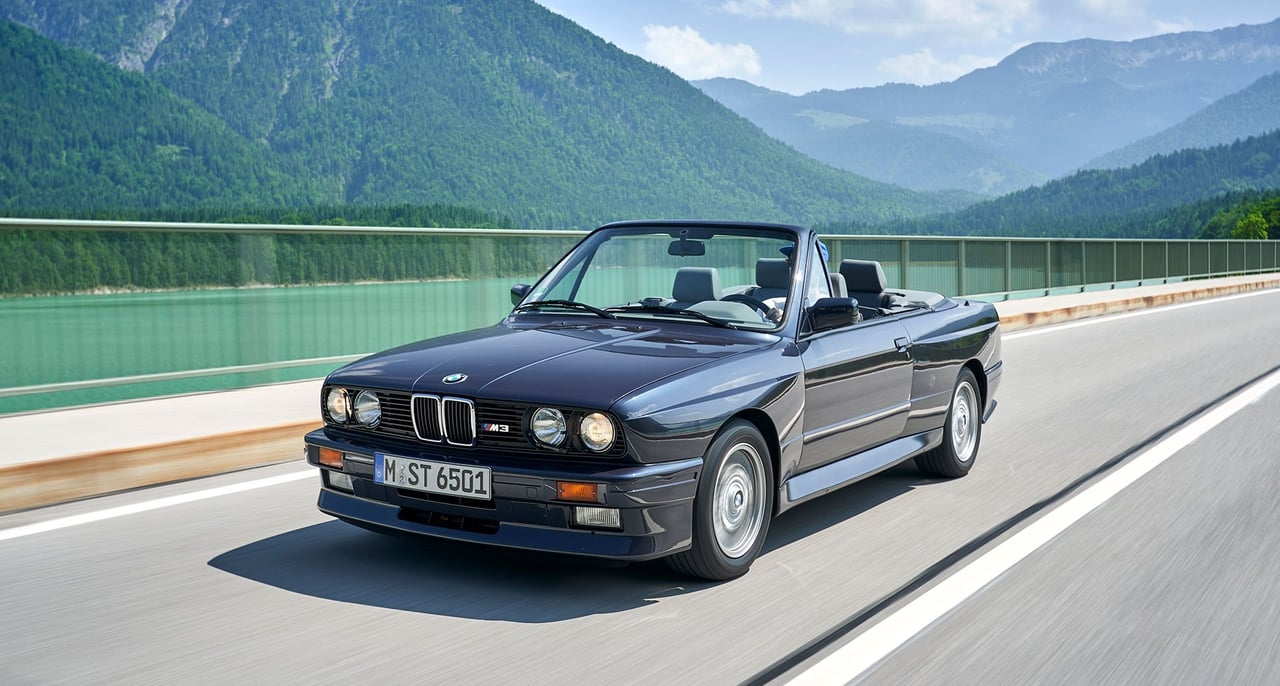

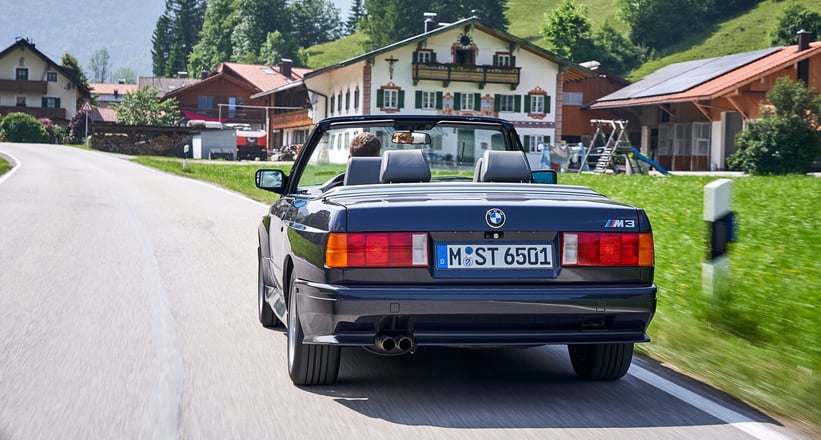
"Dare I squeeze three at your cherry M-3," the Notorious B.I.G. rhymed in his hit "Hypnotize", blasting from every serious radio station in the summer of 1997. And even though I wasn't rolling through Brooklyn in a cherry-red BMW M3, but rather chugging along the streets of southern Germany at the wheel of my mom's dark blue 318i Touring, I still felt a strong connection to the lifestyle across the pond. The glove compartment was bulging with freshly copied mixtapes, half my friends were crammed into the passenger and back seats – and once we headed for the panoramic road above our city on a Friday night and moved the antenna on the roof all the way up, we could even catch the French radio station Skyrock, where DJ Cutkiller played the latest underground hits live from Paris. I had only just gotten my driver's license, and my Beamer truly transported my friends and me into a new reality. We drove to Stuttgart to see The Roots live and then danced until dawn at the Radiobar, or to Zurich to see EPMD at the Rote Fabrik. In those few summers between youth and adulthood, between school and freedom, the BMW 3 Series was our interface with the world, and our home.

The E30 had, of course, already been replaced by the E36 model generation in 1990. But the more angular design, without the typical round twin headlights, lacked the charisma of its predecessor – which had since been generously embraced by the tuning scene and widened, lowered, and further personalized by the generous use of black glass and Blaupunkt speakers. In the years after the fall of the Berlin Wall, the BMW 3 Series of the 1980s became a status symbol of the aspiring working class, a "Made in Germany" integration aid for young migrants cruising between kebab shops and gyms – and a sincere ambassador of international automotive understanding. It is precisely this authentic career from bestseller to underdog and back to veritable museum classic that the E30 owes its unbroken cult status. In the automotive family constellation, it is the rebellious but all the more charismatic brother of the always somewhat too sleek and conformist Porsche 911.
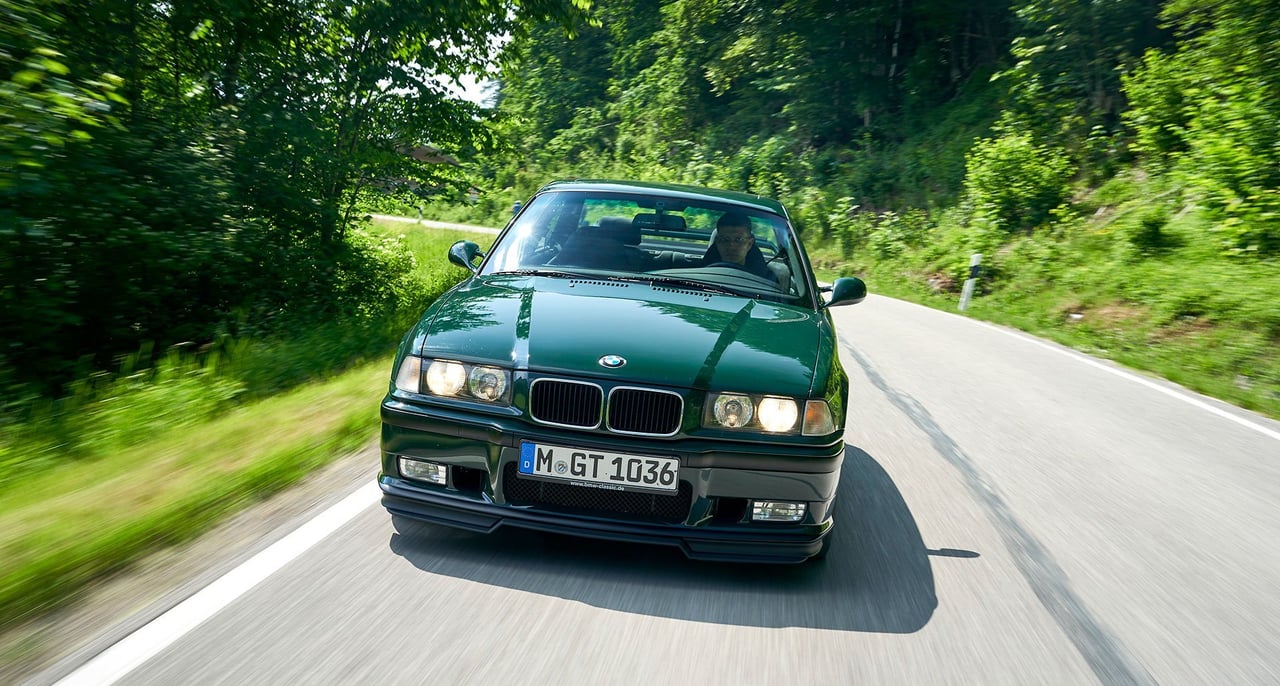
The pure doctrine
Key handover for the third change of our road trip: From the BMW M3 Convertible, I move into the BMW M3 GT of the E36 generation, the car I was most excited about today! Designed by Pinky Lai – shortly before he moved to Porsche to design the 996 and the Boxster – the BMW 3 Series of the E36 generation is an aesthetic hybrid so typical of the 1990s, more of a jack of all trades than a timeless classic. Nevertheless, around 2.7 million cars of the series were sold between 1990 and 2000. Conceived as a homologation model for racing, limited to 356 units and painted exclusively in "British Racing Green," the BMW M3 GT is certainly the most interesting and desirable car of the E36 generation. At first glance, the dark green high-performance coupé with its 295 hp inline six-cylinder engine doesn't seem particularly spectacular. But if you look closer, you'll discover front and rear spoilers, aerodynamically optimized exterior mirrors, and stunning M double-spoke forged alloy wheels! Inside, the special model is recognizable by Amaretta sports seats with nappa leather trim in Mexico Green, BMW Motorsport emblems, and carbon fiber decorative strips. The understatement pays off: Collectors now pay 100,000 euros and more for well-preserved and maintained examples – more than twice of its new price.
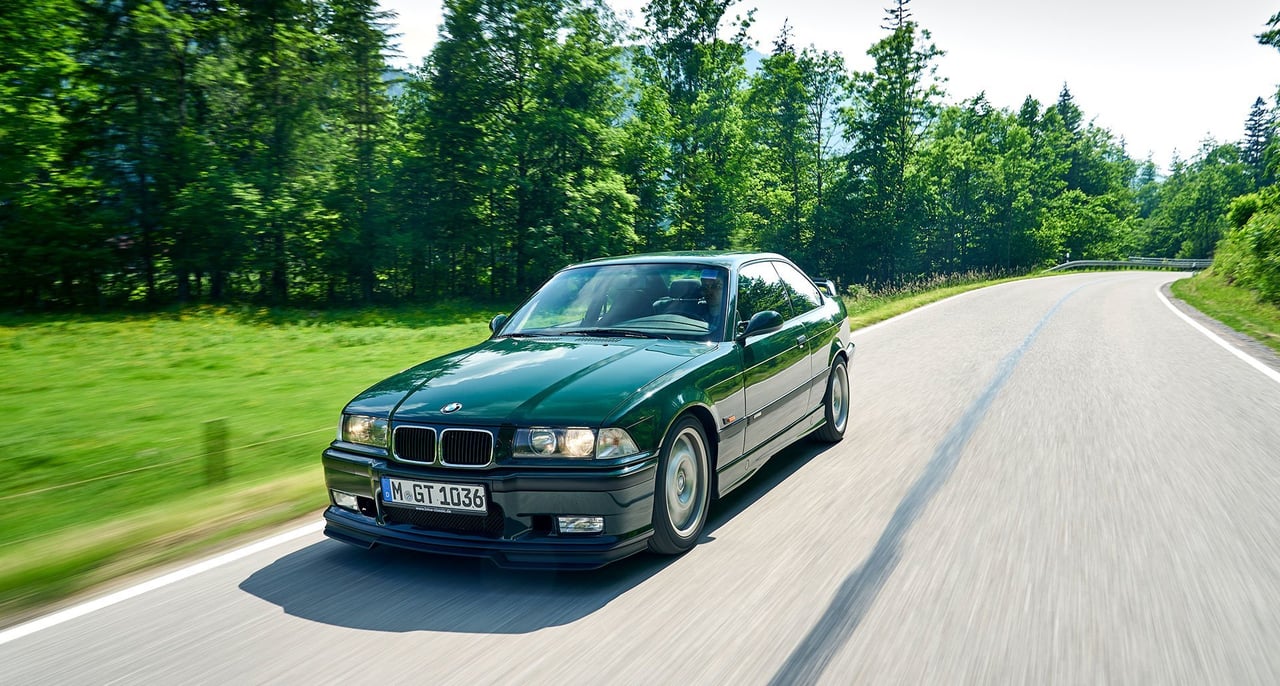
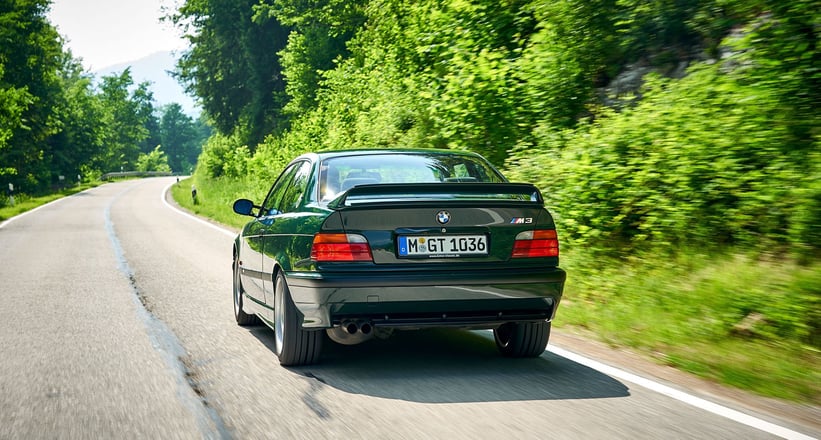
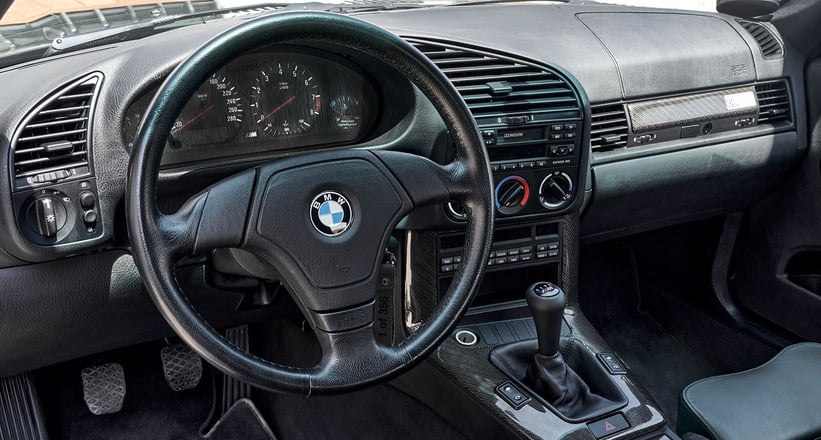
Driving in the left lane of the highway, I also understand why such sums are quite reasonable: Without any electronic driving aids on board, but with a large-displacement engine under the hood, the BMW M3 GT embodies the pure doctrine of the BMW M philosophy. The revised 3.2-liter inline six-cylinder engine, thanks to a 264-degree camshaft, produced a whopping 295 hp, accelerating it to 100 km/h (62 mph) in 5.9 seconds. With its powerful response from idle, high-revving concept, and characteristic inline six-cylinder sound, the engine is rightly considered a technical masterpiece of the 1990s. This is evident not only in the impressive sprinting power and elastic overtaking acceleration for a 30-year-old car, but also in the soundtrack: The free-flowing sound of the six cylinders would surely make even the owners of the latest M3 catapults turn British Racing Green with envy.
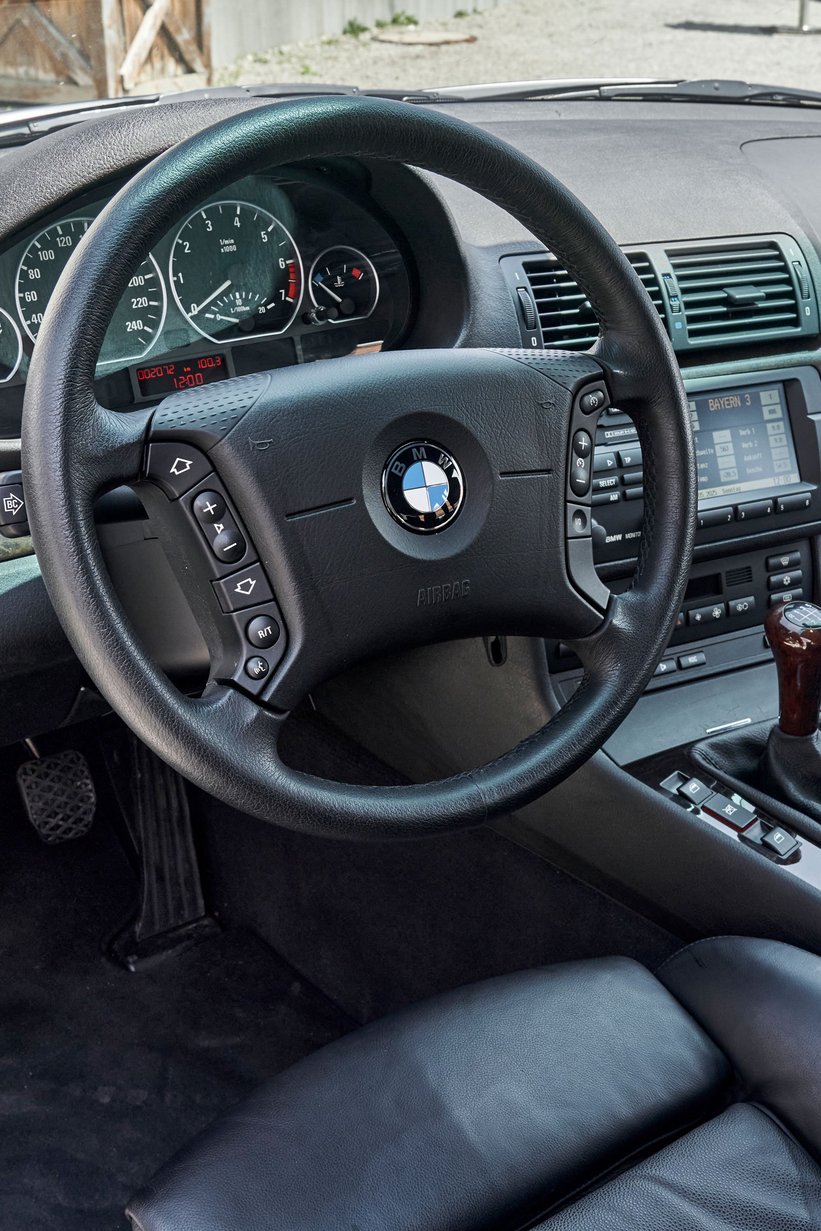
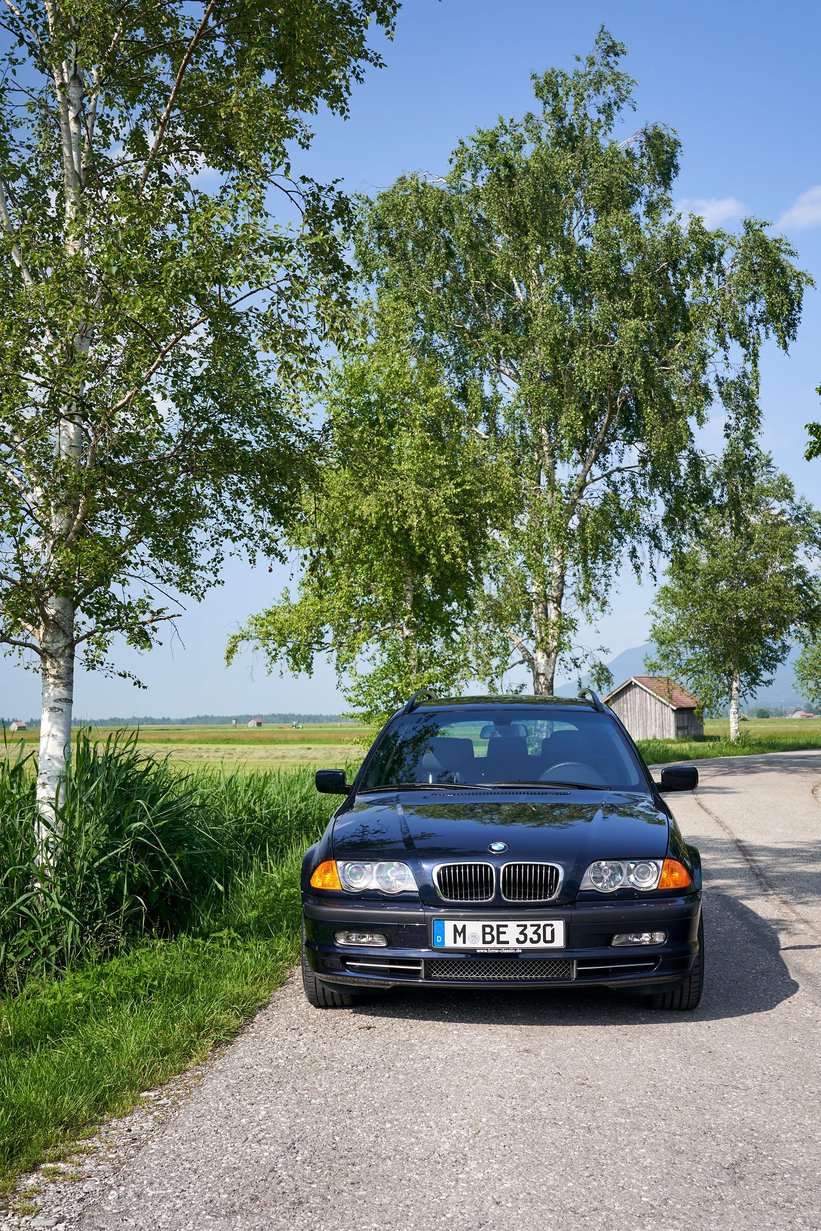
For the return journey to Munich, I finally climb into the BMW 330i Touring of the E46 generation. With around 3.3 million units built between 1997 and 2006, this model series still holds the record for the most successful BMW 3 Series. With it, the 3 Series became even more dynamic, efficient, safer – and more digital: For the first time, it featured a navigation system with a screen and on-board computer, a multifunction steering wheel, and a parking sensor. The E46 represented a technological quantum leap in the mid-size class, with a focus on driving dynamics, safety, and everyday usability. Many innovations that are taken for granted today were implemented here for the first time in a BMW 3 Series. The crowning achievement was the BMW M3 CSL, a 360 hp special model of the generation, released in 2003.

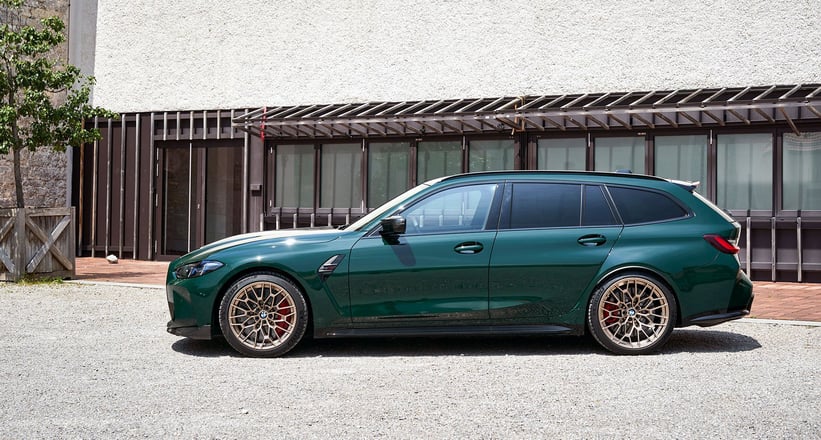

Following in its tyre tracks today is the BMW M3 CS, which I finally board for journey home to Zurich. With its tigershark grille and all-around muscle, 550 hp, eight-speed automatic transmission, all-wheel drive, and acceleration from zero to 100 km/h in 3.4 seconds, the top model of the latest 3 Series generation is a technical marvel that can compete with the fastest sports cars of the world. And yet, it's the light-footed sportiness and sophisticated elegance of the very first BMW 3 Series that surprised and impressed me most on this day. Less is more, perhaps that also applies to the famous Sheer Driving Pleasure.







































